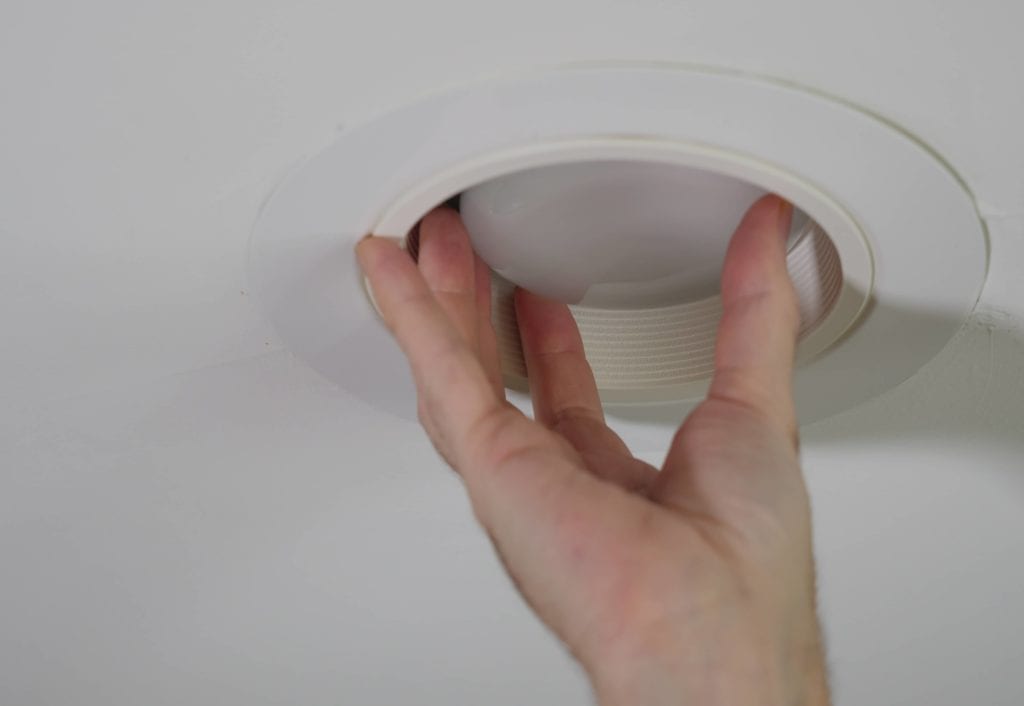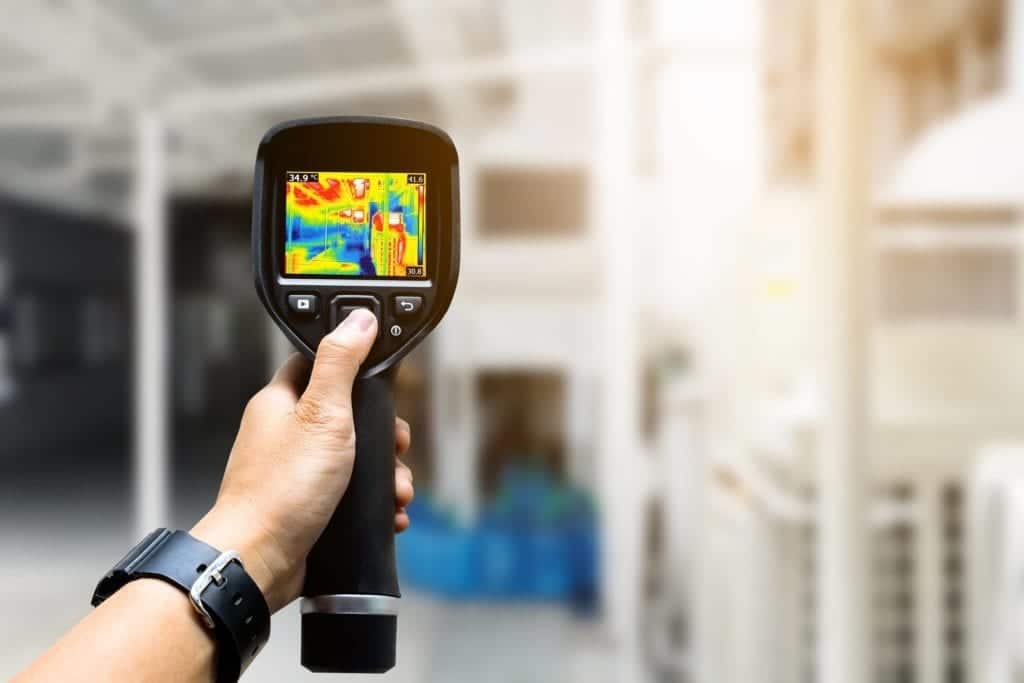
Recessed lighting is very popular in homes and in new builds, it may be standard or may be an upgrade. This type of lighting is aesthetically pleasing as it sits flush against the ceiling and provides more light than other lights in a home. Insulated Contact (IC) rated fixtures are more energy-efficient and safe. How do you know if your recessed lighting is IC rated? It is inside the recessed lighting fixture on the Underwriters Laboratory sticker. It will say “IC Rated” or “Non-IC Rated.”
Let’s take a look at the following: What is IC Rated and IC-AT Rated, how to check if the lights leak air, the importance of insulation near the lighting, and what if the lights are Non IC rated.
Is the Recessed Lighting IC Rated
As mentioned above, IC rated recessed lighting is “insulated contact” and is safe to install fiberglass and cellulose insulation in contact with the lighting. The light fixtures that have this rating are energy efficient because of their insulation of heat and lower wattage lamps.
This is important because safety is essential in the home. Also, when you have energy efficiency lighting, you are saving money on your electric bill each month.

How Do IC Rated Can Lights Work?
The can lights can become very hot with the electricity and lighting. Therefore, there is a possibility that heat transfers to the insulation. IC Rated Can lights work by having two layers of metal with an air gap between the two.
This air gap between the metals creates an insulating effect that significantly lowers the heat transfer of can lights.
Is the Recessed Lighting IC-AT Rated
IC is important but so is the IC-AT rating. This means that it is IC rated AND is air tight. Let’s look at the steps of finding the IC label and IC-AT.
- Go into the attic and look at the fixture from the attic side. You may be able to find the label and rating there. If not, start on step 2.
- Get your step ladder and carefully step up close to the ceiling
- Remove the trim from the outside and then remove the bulb
- The fixture is often known as the “can” and holds the bulb. If the can has slits or holes on it, it is not IC rated.
- Continue to look to see if there is an Underwriters Laboratory sticker. If there is, the letters “IC” will be in the number. Also, look for the letters “IC-AT” on the label model number so you know it is airtight sealed.

How to Check If the Recessed Lights Leak Air
When you are in the attic, do you see light coming through from the home? If yes, then it is not air tight sealed. Unfortunately, if there are holes in the can, the air is escaping into the attic and causing it to be hotter. If you are finding that your electricity bill is higher than it should be or it is really hot in the attic, this can be the problem.
Why Insulation Near the IC Rating Recessed Lighting is Important
It might sound like insulation near the lights would be a fire hazard, however, it is not and is necessary. There needs to be insulation around the lights to keep the air from escaping. Hiring a professional to use a thermal imaging camera to find out if there is enough insulation in the home or if the air is escaping is essential.
If there is not enough attic insulation, you can add it. Then, you should see the temperature in the attic cooler in summer and warmer in winter, depending on where you live.
- Take a look at pages 31 and 32 and this chart shows the zones of the U.S.
- Then, find your state and the zone on the chart.
- Look at the corresponding chart to see the R- values. The higher the number, the better the home will resist the transfer of heat. Here in Florida, ours is Zone 2 and R30-R49 for insulation. Not sure how much insulation you have? Call a professional to take a look for you.
What If You Don’t Have Enough Insulation Around the IC Rated Recessed Lighting
If you don’t have enough insulation, you are burning money each month with the amount of air escaping and how hard the HVAC system must work. It will save you money if you increase the insulation, especially around the recessed lights in the attic.
In the warmer states, such as Florida, it may even make sense to add an attic ventilation fan after you have made sure that you have enough insulation in the attic to keep it cooler in the summer. Call a professional to take a look for you to see if this will help.
What If the Recessed Lighting is Non-IC Rated
Non-IC rated lighting that has insulation on it presents a fire hazard. The bulbs can overheat and cause a fire before you know it. You will need to contact a professional to take this lighting out and replace them with IC Rated recessed lights.
This ends up being a home improvement project and is not easy. However, there is an alternative and that is to replace the bulbs with LED lights so there is no longer a fire hazard.
Conclusion
Recessed lighting is aesthetically pleasing, but proper installation is important as well as an IC Rating. Proper insulation will allow for the lights to work properly and be energy efficient, but also to keep the air in the home where it should be.
Do you have questions about the recessed lighting in your home, IC Rated, IC-AT Rated, Non-IC Rated, or about the insulation in your attic? Leave us a note below and we are happy to help!



